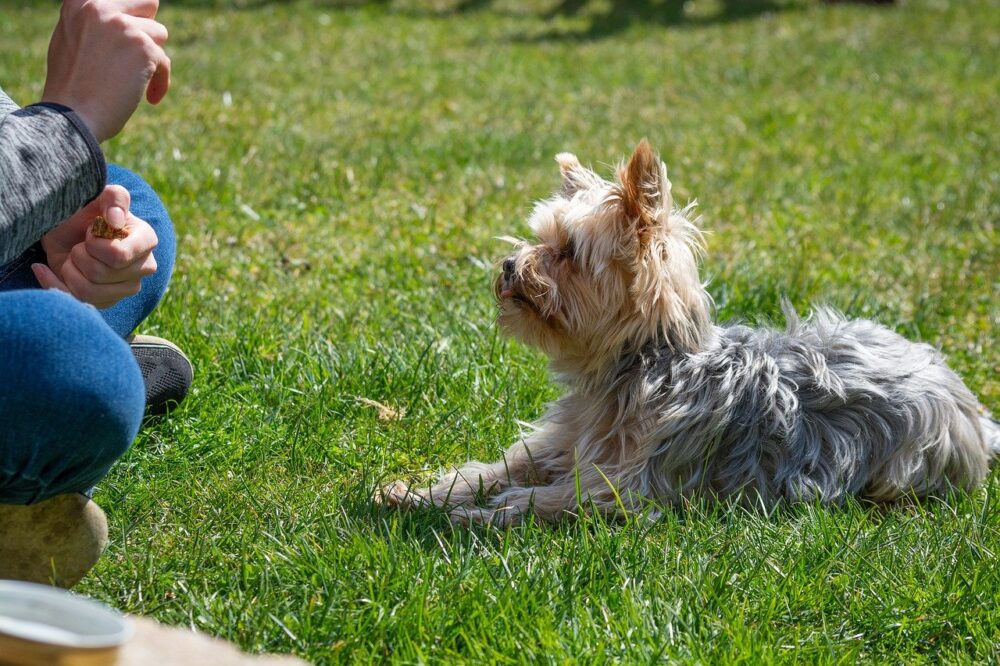When it comes to teaching children, there are multiple different styles of learning, including visual, auditory, and kinesthetic. In other words, kids learn best from either what they see, hear, or do, respectively. To try and encompass these different styles, teachers and parents attempt to teach using activities that focus on all three methods. When it comes to a different breed of learners, though, they are not given the same consideration — those trainees being man’s best friend: dogs!
Most pet owners stick to getting their dogs to form associations between verbal commands and certain actions, but one study by Emory University suggests that most dogs may not be auditory learners.
Most pet owners stick to getting their dogs to form associations between verbal commands and certain actions, but one study by Emory University suggests that most dogs may not be auditory learners. The study attempted to explore whether visual, auditory, or olfactory learning was the most effective for establishing memories connected to a stimulus. To do this, the scientists used fMRI to study changes in a dog’s level of interest with a certain stimulus. For the visual trials, the researchers would present a plastic pineapple or flamingo that the dogs had not seen before. For the auditory trial, they maintained similar conditions but instead used two auditory cues said by the owner: “Callooh” and “Frabjous.” Finally, the third set of dogs were tested by olfactory method using isoamyl acetate and hexanol as the stimuli. For each trial, the dogs were separated into two groups, rewarded and non-rewarded, with the latter acting as a negative control for their response to being exposed to the stimulus without a reward association.
They found that olfactory and visual stimuli evoked much higher levels of interest in the rewarded dogs, whereas the auditory stimuli did not catch the attention of the dogs anywhere near similar levels.
Studying the caudate, amygdala, and parietotemporal areas of the brain, the researchers were able to gauge the dogs’ rates of interest in the stimuli before and after rewarding or not rewarding the dogs. They found that olfactory and visual stimuli evoked much higher levels of interest in the rewarded dogs, whereas the auditory stimuli did not catch the attention of the dogs anywhere near similar levels. This indicated to the researchers that dogs may not be great auditory learners, and perhaps, training dogs using verbal cues, as is commonly done, might not be the best method.
Another interesting study done by Texas Tech University investigated the relationship between behavioral persistence and olfactory learning in dogs. Behavioral persistence is an animal’s inability to change certain behaviors despite positive or aversive stimuli, which typically would lead to change; this is the major reason why some dogs cannot be trained and certified to be service or police dogs. The study used two different tests, a resistance to extinction test and an odor discrimination test. The resistance to extinction test involved an apparatus where dogs were trained to pull a lever to receive a treat. Once trained, the dogs would no longer receive a reward, and after that, the time it took for the dog to stop pulling the lever was measured. The odor discrimination test used two bins: an empty one and one containing a diluted odor that the dog was conditioned to remember. If the dog rooted in the conditioned bin, it succeeded, but it was counted as a failure if the dog rooted in the empty bin or ignored both bins.
Perhaps the best way to train a dog to stop chewing up shoes is not through scolding but through smell.
This experiment showed that dogs that scored high in the olfactory discrimination test were more likely to give up the behavior of pulling the lever during the resistance to extinction test, whereas ones scoring lower on the olfactory test were more persistent. This led researchers to believe that dogs are more inclined to change their behavior if they previously had adequate olfactory conditioning. Perhaps the best way to train a dog to stop chewing up shoes is not through scolding but through smell.
When it comes to different learning styles, dogs seem to be just as complicated as humans. Perhaps the way dogs are normally trained is not as strong of a method as previously thought, and training dogs using olfactory or visual cues would be more effective.
Image Source: Pixabay




